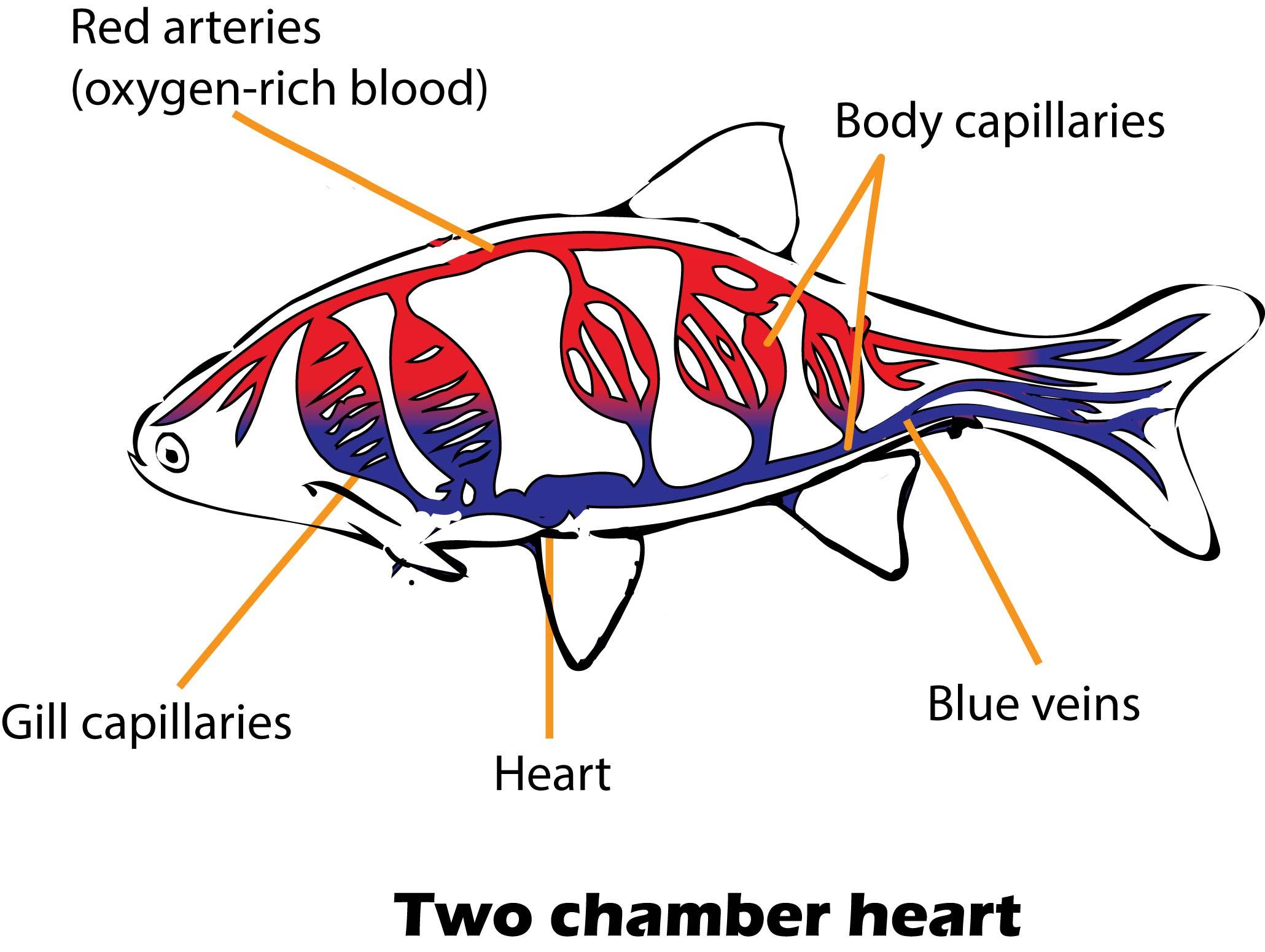Question
Question: Two chambered heart occurs in A) Crocodiles B) Fish C) Aves D) Amphibians...
Two chambered heart occurs in
A) Crocodiles
B) Fish
C) Aves
D) Amphibians
Solution
In two chambered hearts the blood is not free in a cavity that forms a closed- loop system. Thus, they have gills to breathe and to purify their blood. They are ectothermic and live in water.
Complete answer:
Fishes have a closed-loop circulatory system, where the heart pumps the blood in a single loop throughout the body. Crocodiles have a four-chambered heart. Aves and amphibians have a three-chambered heart that shows more complex circulation than fishes.
Additional Information: 
-Fishes are vertebrates are gills bearing animals that lack limbs and digits.
-Fishes have four parts of the heart including two chambers.
-The blood enters through the sinus venosus to the atrium and sends it to the ventricle where it pumps out of the heart.
-The presence of bulbus arteriosus which connects the aorta and is responsible for the pressure of blood in the heart.
-The ventricle pumps deoxygenated blood to the gills and oxygen from the surrounding water is replenished to the blood.
-Mammals and birds have a high oxygen demand and have high metabolism thus have a four-chambered heart so it can flow more rapidly to the other tissues.
-Two and three chambered hearts are less efficient than four chambered hearts due to mixing of blood.
So, the correct option is ‘fishes’.
Note:
-Animals having two-chambered hearts use gills to replenish oxygen in the blood.
-Animals having three or four hearts are those that also contain lungs for respiration.
-Amphibians have a three-chambered heart that is two atria and one ventricle.
-In the chambered heart the right atrium receives oxygen-poor blood from the body and the left ventricle pumps out the oxygen-rich blood to the body.
